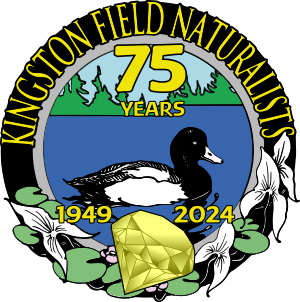Since my last notice, preparations for the 3rd Ontario Breeding Bird Atlas have progressed significantly with a wealth of resources now available on the website (https://www.birdsontario.org/#). This is also where you can register as a participant which is necessary if you wish to contribute data. Although the main breeding period for the majority of birds local to our area is still a couple of months away, some species, such as Great Horned Owls and Bald Eagles, are already on nests.
Although the atlas runs for a total of 5 years, having people assigned to squares from the outset is hugely beneficial as this will allow us to ‘do the groundwork’ in the first 2-3 years. Once we have much of the basic work covered off, we’ll then be able to start filling the gaps as well as targeting breeding evidence for species that may have been missed to date. The Kingston area (Region 21) is one of the bigger ones in southern Ontario with 75 10x10km squares extending from roughly Charleston Lake in the east to as far west as Belleville. The atlas region also extends much further north than the traditional KFN circle, reaching beyond Hwy 7 in the west. Currently, we still have 29 squares waiting for a lead atlasser, many in the ‘far west’.
Most of the KFN area falls within ‘Region 21’. However, Prince Edward County, Hay Bay, and the 401 corridor from Deseronto to Belleville lies within ‘Region 20’. Regions to the east and north of the KFN study area may also be of interest. To contact a Regional Coordinator, see below:
Region 21 – Kingston (Mark Read): kingston@birdsontario.org.
Region 20 – Prince Edward (Nick Bartok): princeedward@birdsontario.org
Region 22 – Leeds and Grenville (Stew Hammill and Gerard Phillips): leeds.grenville@birdsontario.org
Region 25 – Silver Lake (Mark Read and Richard Knapton): silverlake@birdsontario.org
I realize some of the above may seem somewhat intimidating but once registered, anyone can contribute data to any square at any time (during the breeding season). It is absolutely not necessary to take on a full square. Causal observations from your own properties or local parks will be essential to mapping distribution of breeding species at a refined level; beyond that seen in Atlas 2. However, if you are interested in committing to a whole 10x10km square, please contact the correct regional coordinator, as identified above, for more information.
